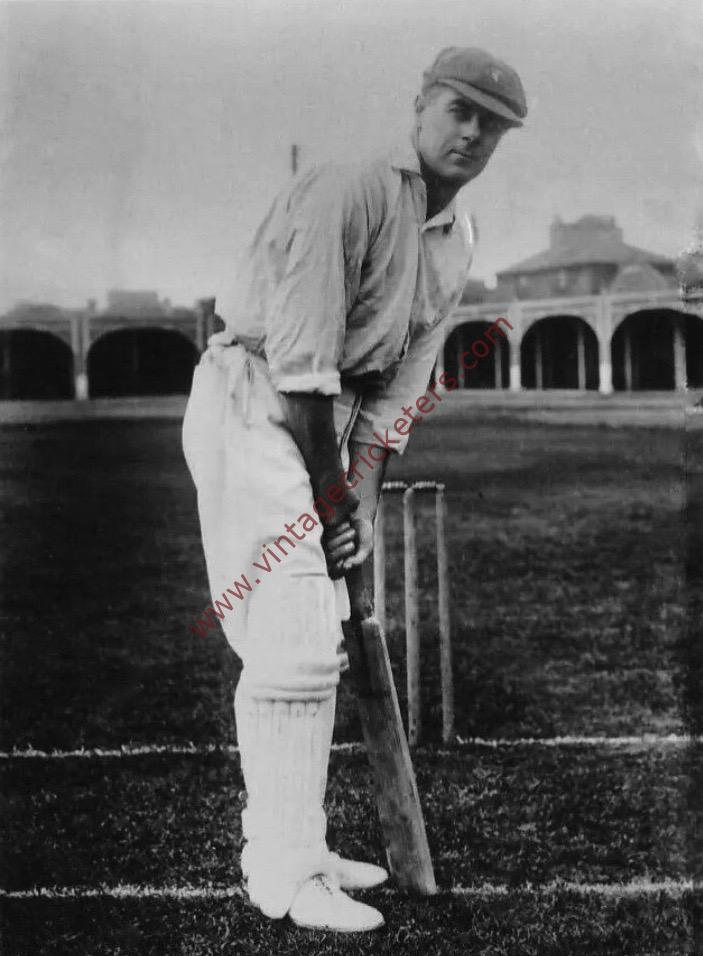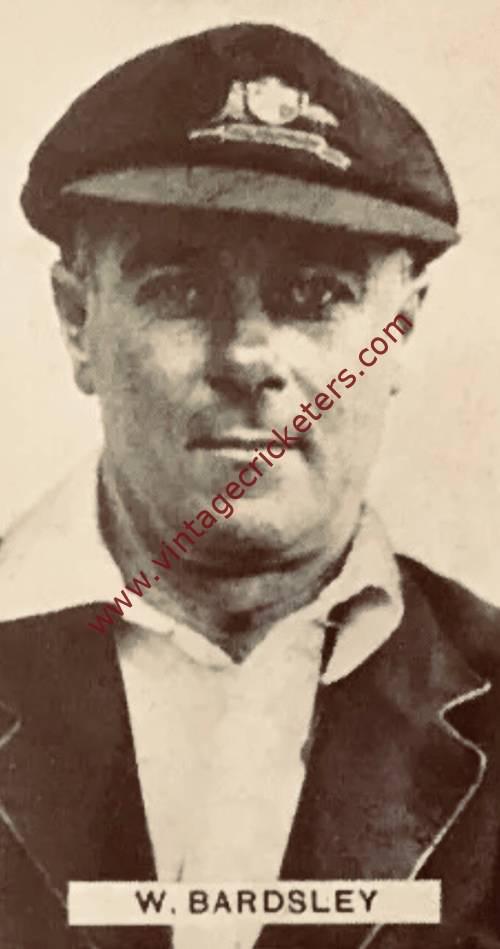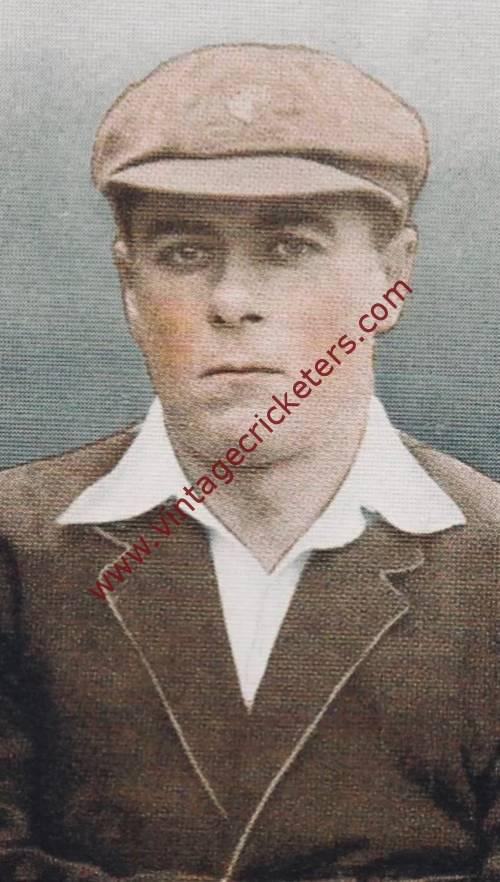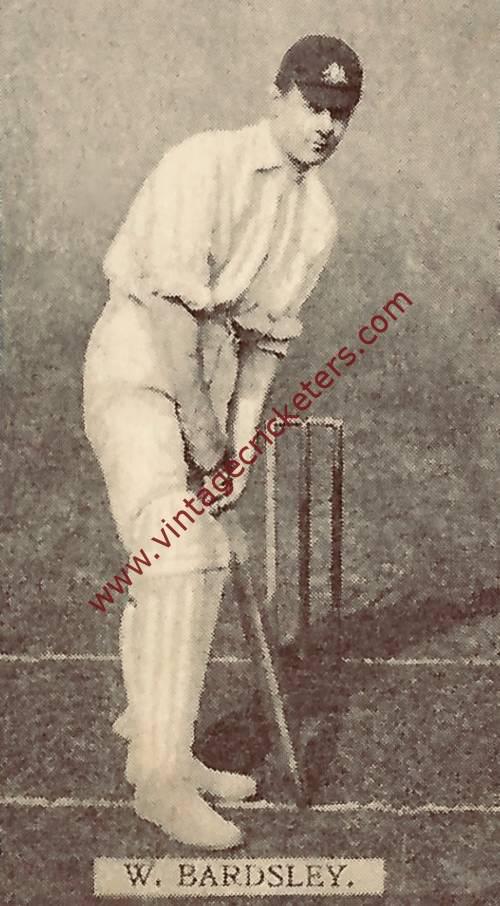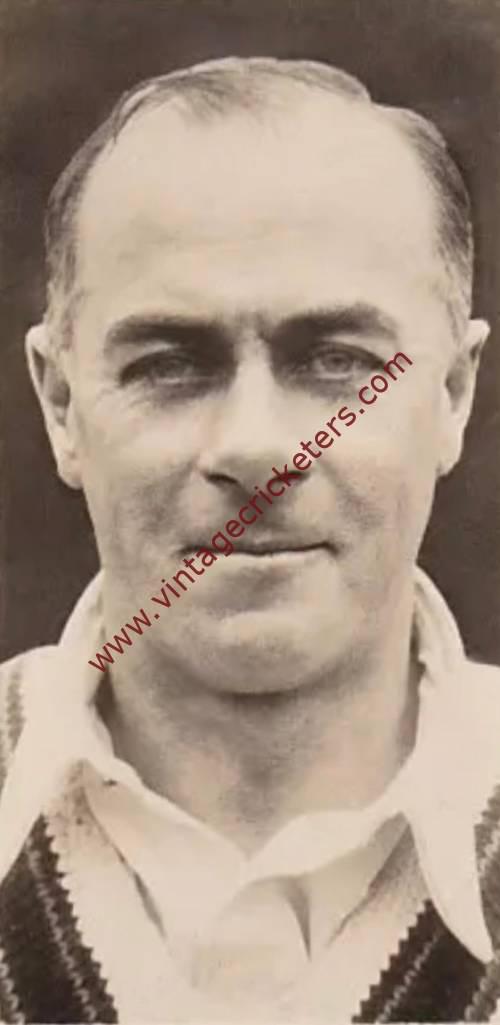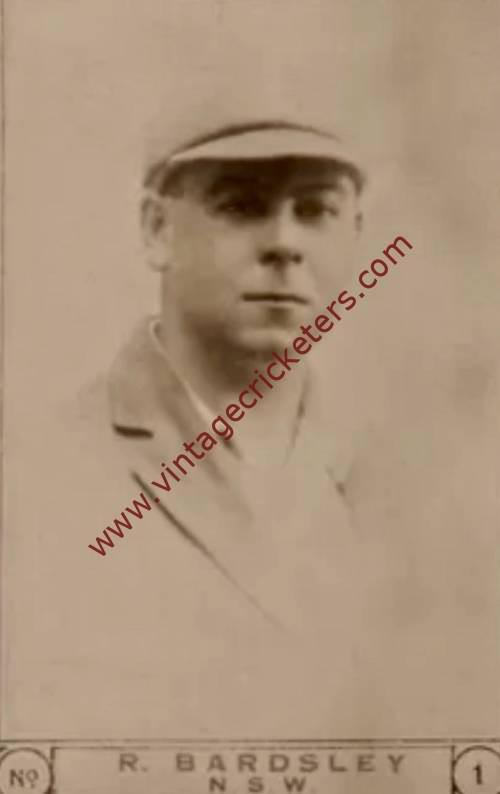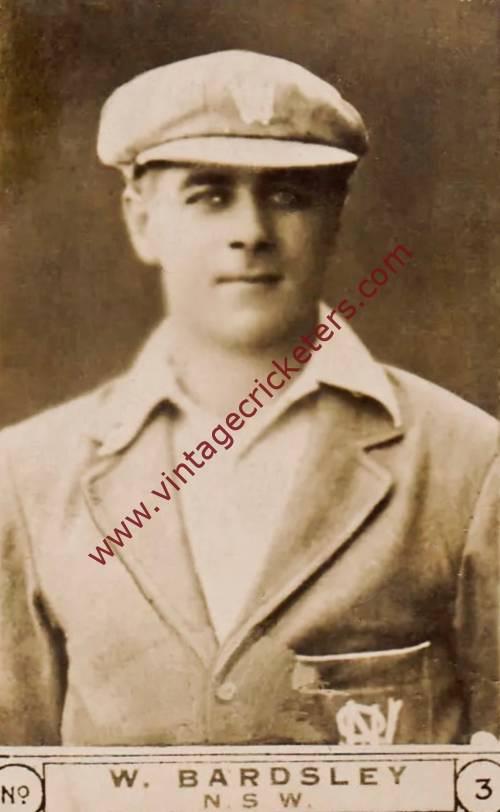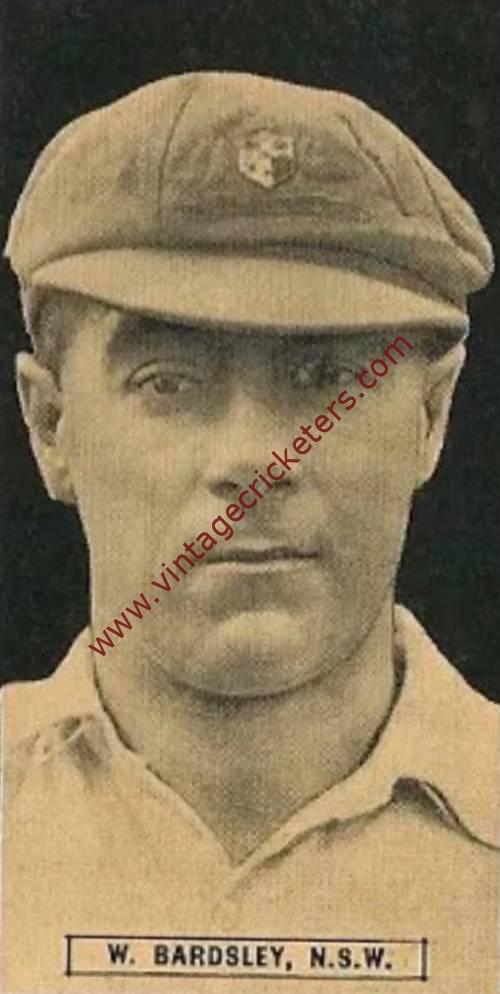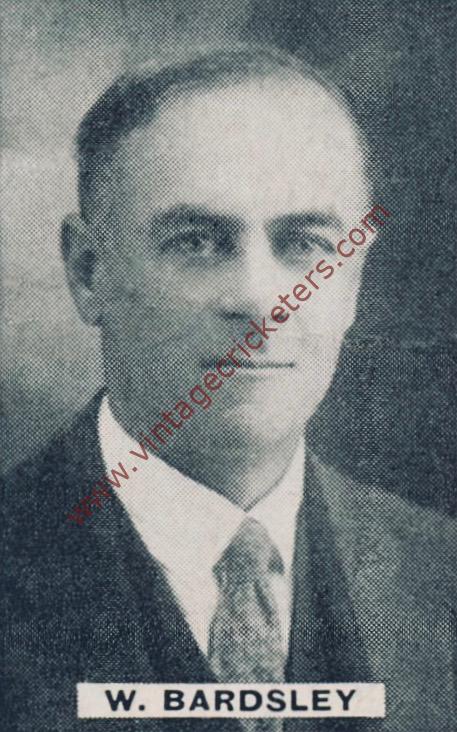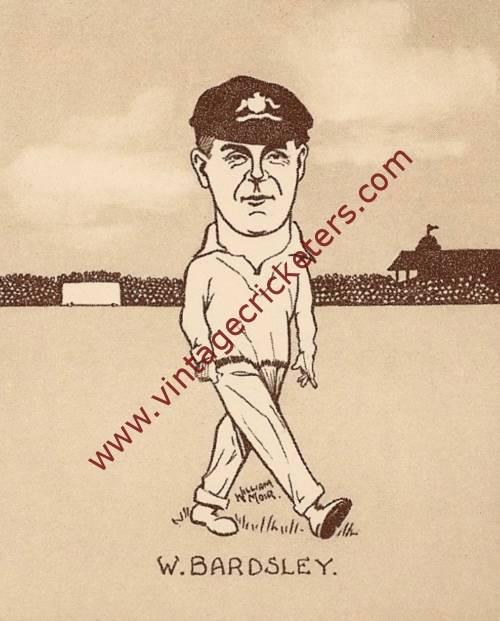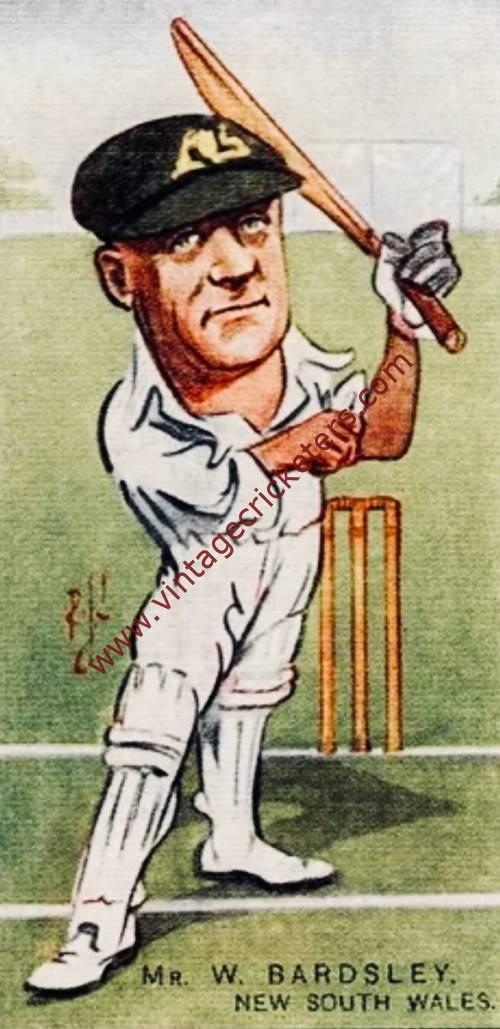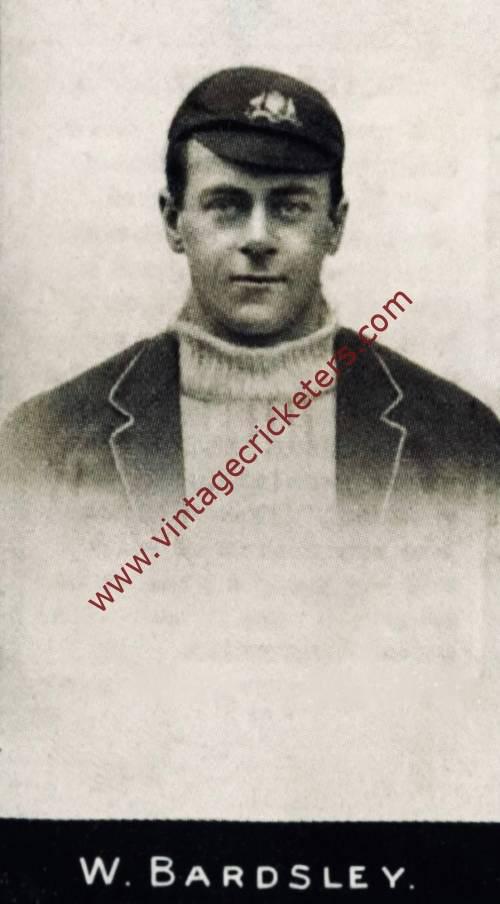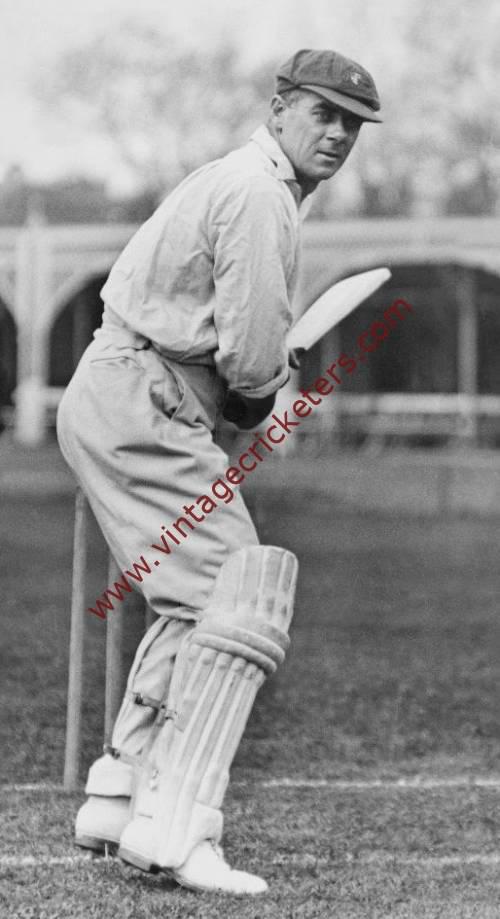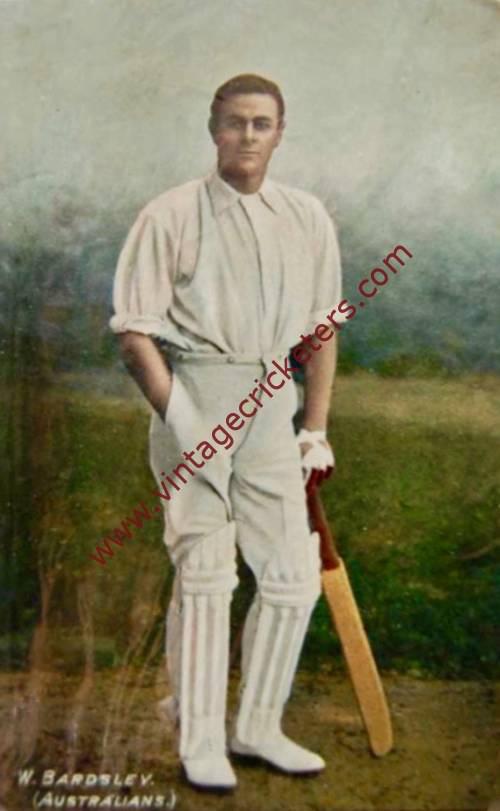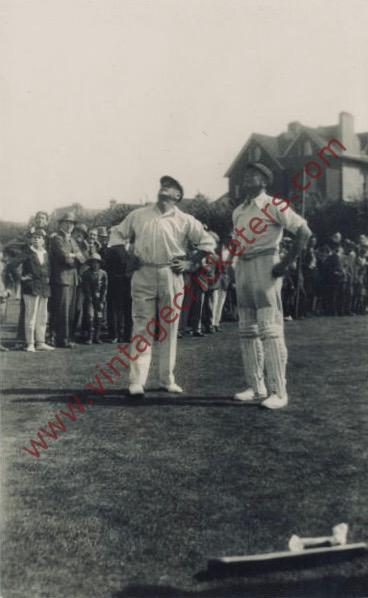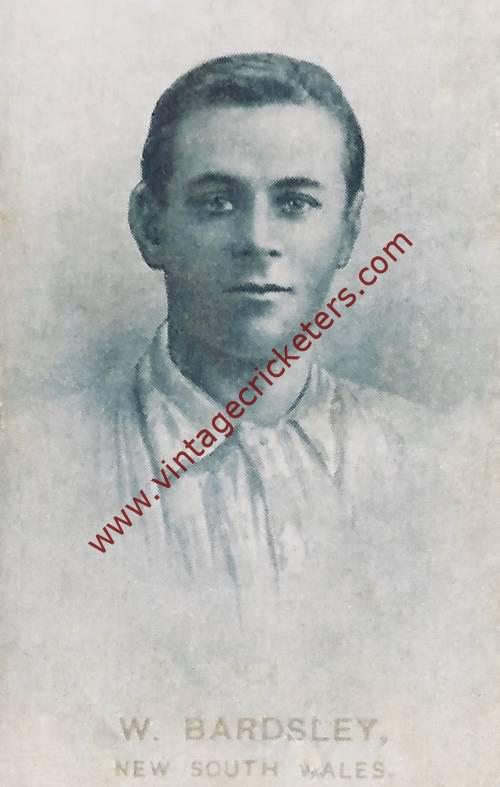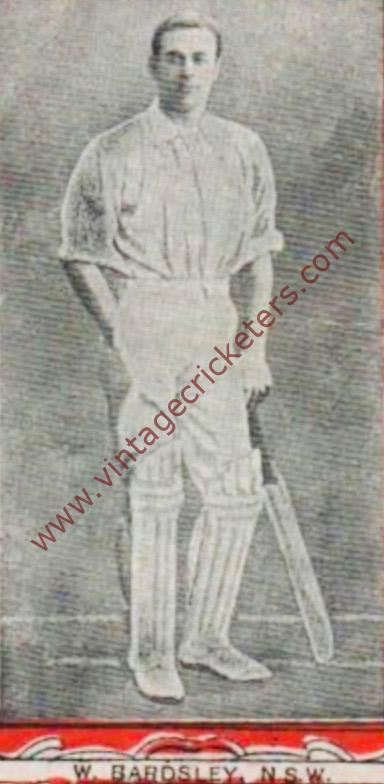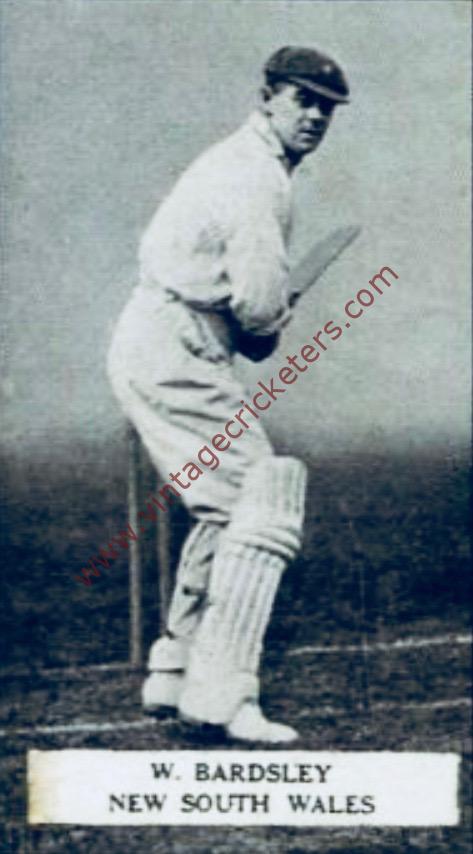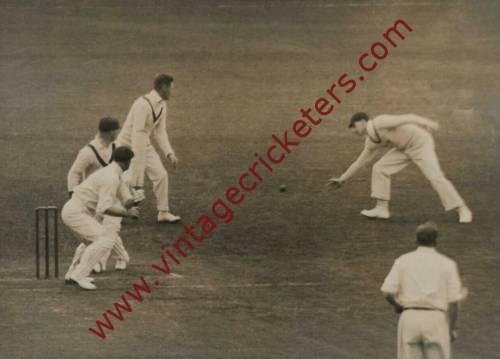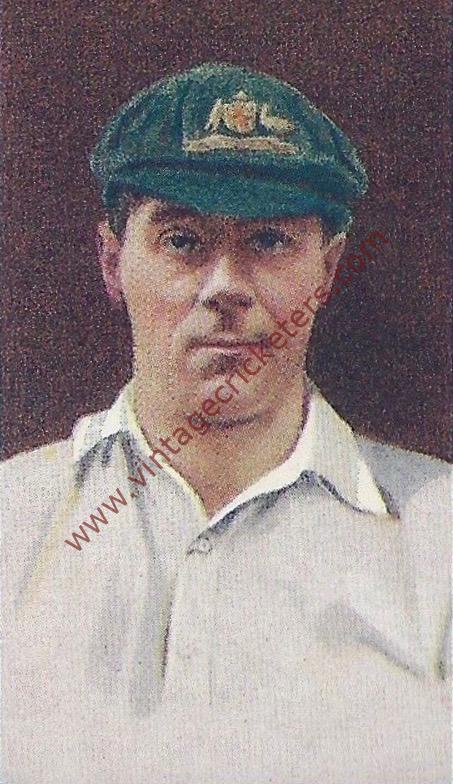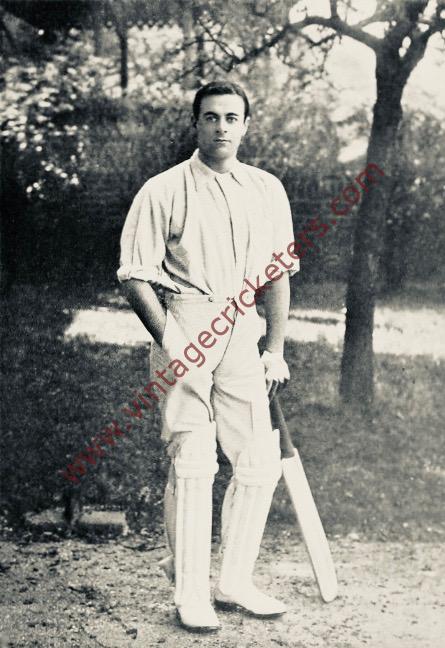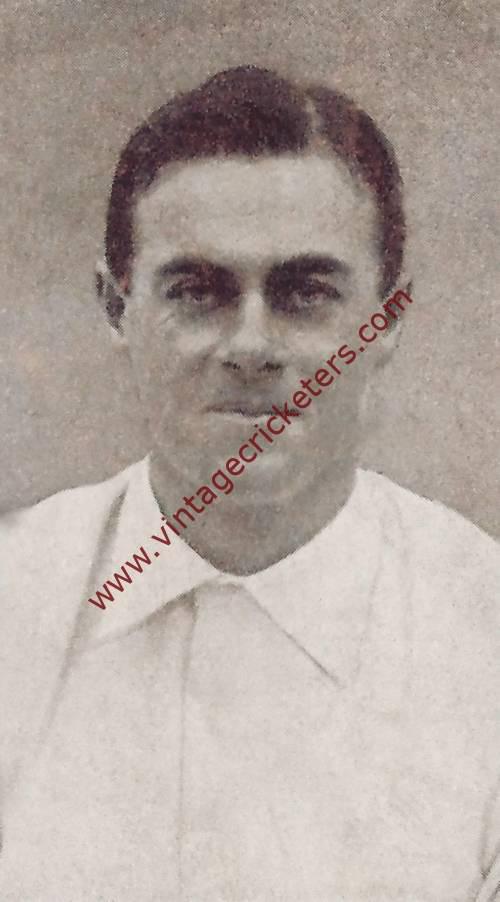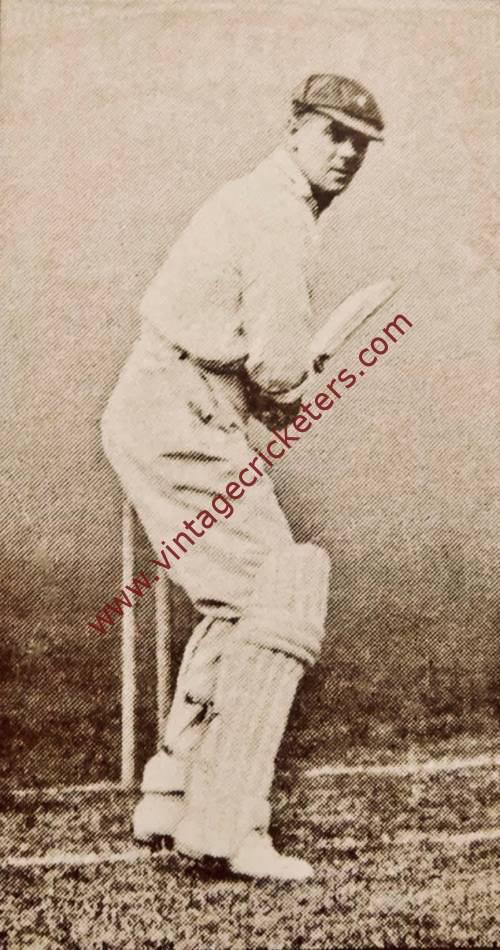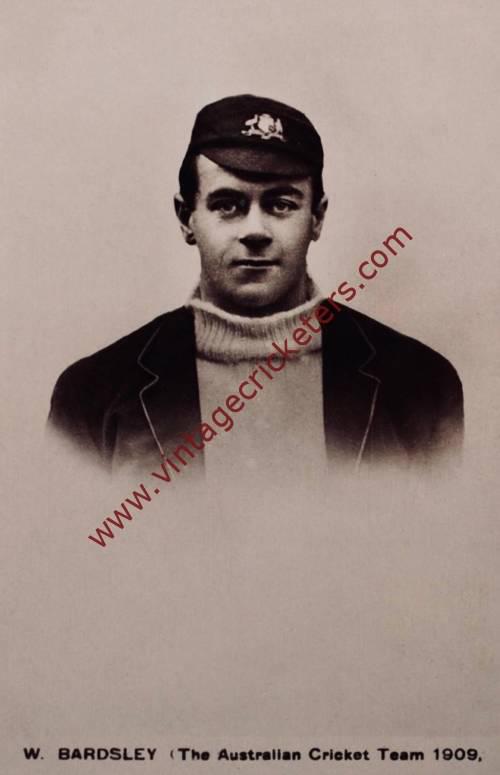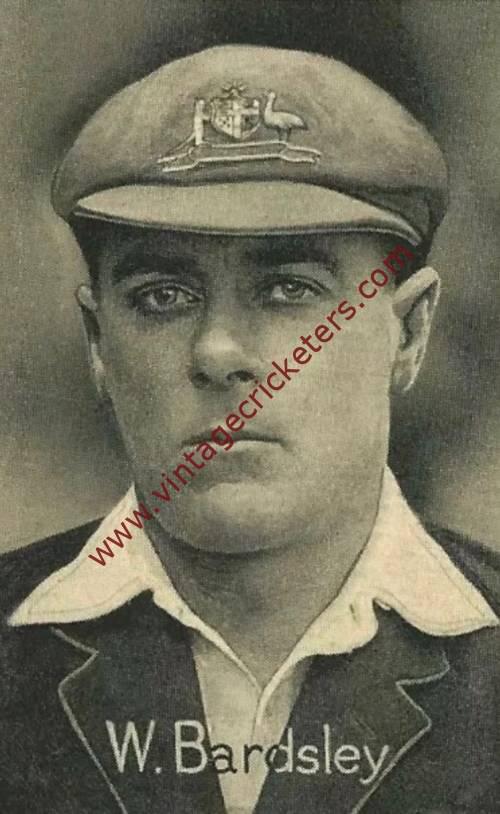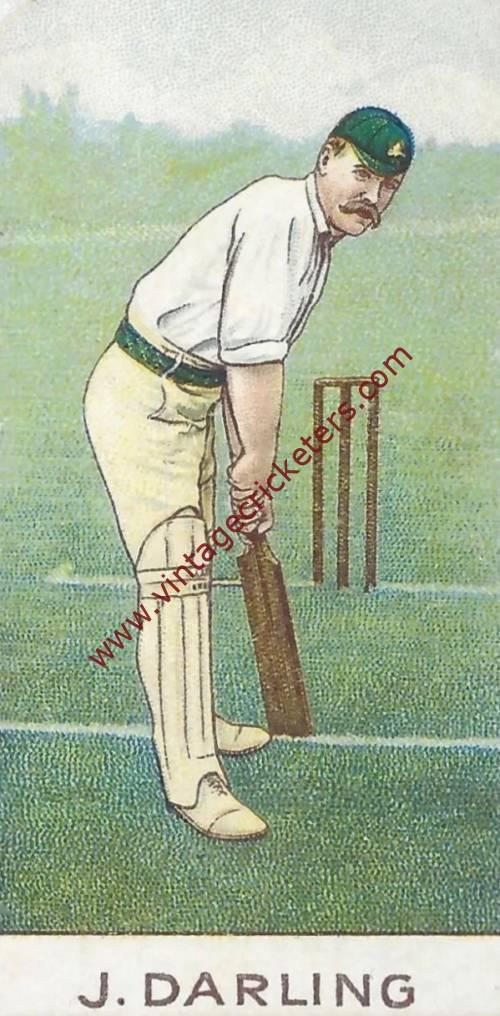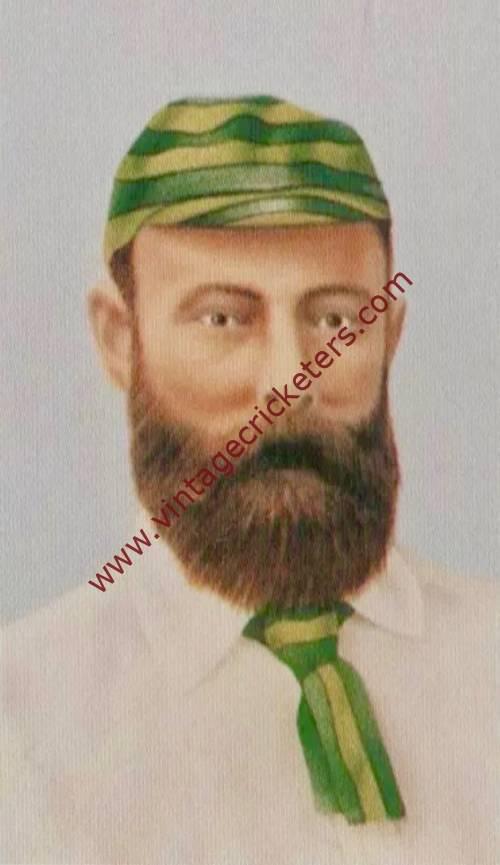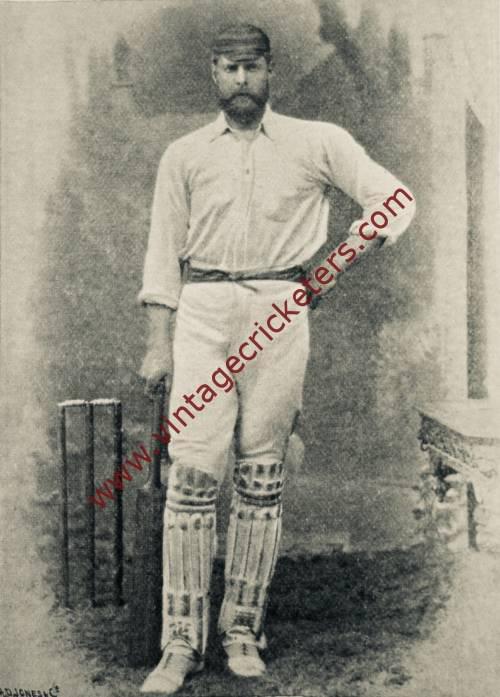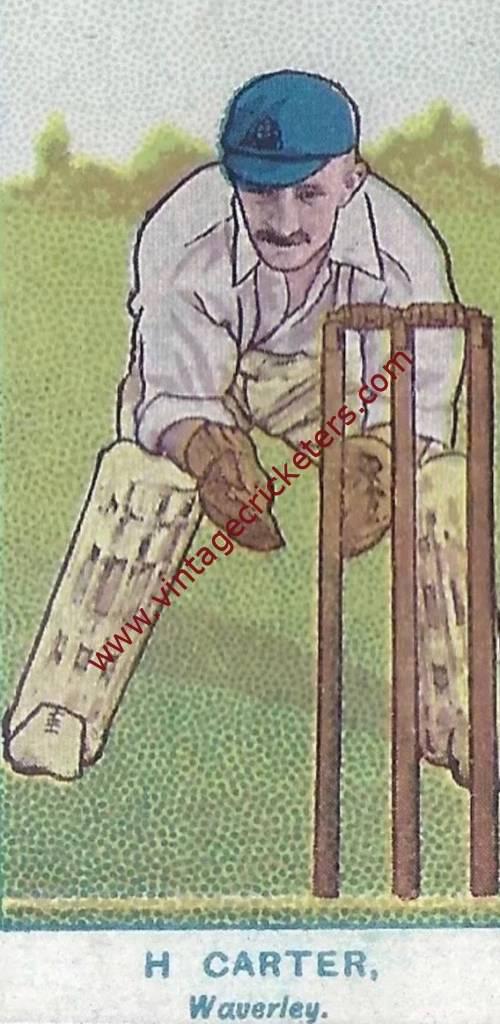Description
Warren, New South Wales born Warren Bardsley was a school-mate of ‘Tibby’ Cotter, the Australian fast bowler, and started his career playing for Glebe in the Sydney First Grade competition in 1899. He made his State debut for New South Wales against Queensland at Brisbane in 1903-04, coming to prominence from 1907-08 onwards, scoring 108 against the M.C.C. touring team. The next season he scored 119 against South Australia, 192 against Victoria and 264 for the Australian XI against The Rest, at an average of 83.11. On Australia’s 1909 tour to England, having struggled in the first four Test matches with a previous high score of 46 in 8 innings, in the fifth Test at The Oval he hit 136 and 130 from the England bowling and in so doing became the first player to hit two separate hundreds in a Test match, sharing with Syd Gregory an opening partnership of 180 that stood as an Australian Test record for over fifty years. His total runs during the summer was 2,180, including seven centuries, at an average of 46.39 and was named as one of Wisden’s Cricketers of the Year.
Known as a serious man, a non-smoker, teetotaller and vegetarian, he turned into one the greatest left-handed batsmen produced by Australia. Only two of his countrymen, Sir Donald Bradman and Lindsay Hassett, surpassed his record of 53 centuries, 29 of them scored in England, in first class matches. As a stylist, Bardsley compared favourably with any left-hander of his day. His upright stance and eminently straight bat never failed to exercise a special charm upon spectators, and he used his feet to perfection while employing a wide variety of strokes. If less brilliant in cutting behind point than Clem Hill, he was stronger in hitting past cover and to leg and he possessed a specially powerful straight drive.
Bardsley became established as an opening batsman for his country and in 1912 he again headed the aggregates and averages with 2,441 runs at an average of 51 with eight centuries. The First World War robbed Bardsley of five years of his playing career and by the time Test cricket resumed in 1920, Bardsley was aged in his late 30’s. Inevitably his form was not the same – in the 21 Tests Bardsley played from 1920 to 1926, he managed only one century and the fine form of younger opening batsmen Bill Ponsford, Bill Woodfull and Herbie Collins put pressure on his Test place. Domestically Bardsley continued to average in the high 30’s to low 40’s for New South Wales throughout much of the early 1920’s.
Nonetheless his consistency helped lay the solid foundation on which the successes of W.W. Armstrong’s 1921 side were built, on this tour Bardsley managed nine centuries; in 1926, already 43 and as Australia’s vice-captain, he carried his bat for 193 in the Lord’s Test batting over six and a half hours, no higher individual score had at that time been registered in a Test match at Lord’s (subsequently surpassed by Bradman’s 254 in 1930) and this also made him the oldest player to score a Test century for Australia. He subsequently captained Australia in the Tests at Headingley and Old Trafford. He was also the oldest captain to make captaincy debut at the age of 43 years and 216 days.
He retired from representative cricket at the end of the 1926-27 Australian season, having amassed 17,031 runs in first class matches at an average of just under 50. He continued playing grade cricket with Western Suburbs until 1933, having joined the club in 1919; his aggregate of 12,110 runs at 50 was a record for the Sydney First Grade competition.
Altogether Bardsley represented Australia in 41 Test matches, scoring 2,469 runs in 66 innings, average 40.47, against England he had scored 1,334 runs at 33. Besides the tours to England, he visited New Zealand in 1909-10 and 1923-24, South Africa in 1921-22, and also played cricket in Fiji, USA, Canada and Bermuda.
Bardsley served briefly as a New South Wales and as an Australia selector, and shared a testimonial with Jack Gregory in 1936 which yielded £1,500. He continued to play club cricket for Glebe into his fifties.
Sir Jack Hobbs said of Bardsley: “I cannot imagine a nicer type of fellow. I probably played against him as often as any Englishman and he was one of the best left-handers of the upright, classical school that I have ever seen. I would not like to choose between him and Clem Hill as the best Australian left-hander, because their styles were so different. Clem crouched more and was more aggressive”.
His brother Raymond “Mick” Bardsley played eleven first class matches for New South Wales between 1920-21 and 1925-26.

